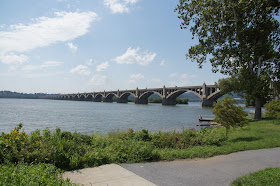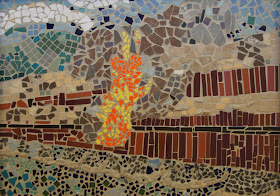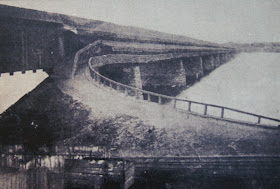 |
| Columbia Crossing River Trails Center |
 |
| View of the Susquehanna River and bridge in Columbia. |
 |
| In the late 1820s a canal was built on the Columbia side of the Susquehanna which brought materials from the north to Columbia. |
 |
| This is a stained glass representation of the burning of the bridge over the Susquehanna in 1863. |
 |
| Another depiction showing the burning of the bridge. |
 |
| Another view of the wooden bridge. |
 |
| This photo shows two cars next to one another on the bridge. You can see the railroad tracks under them. |
|
Car that didn't make the correct turn.
 |
| This old postcard show the toll booths on the bridge on the Columbia side of the bridge. |
 |
| This photo shows the bridge from the water. |














No comments:
Post a Comment